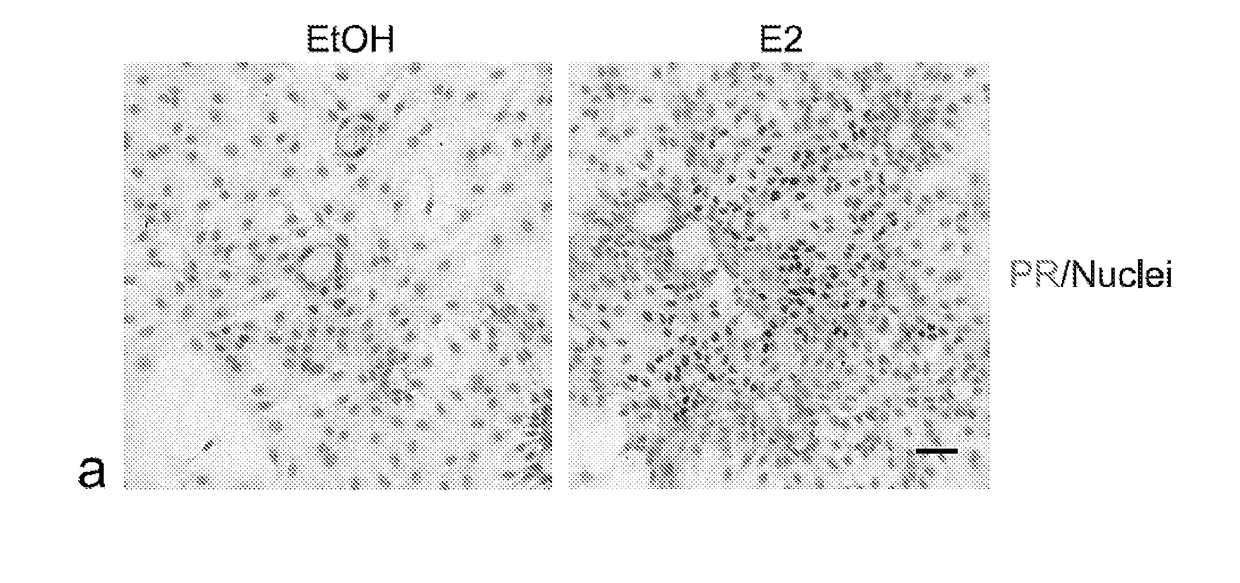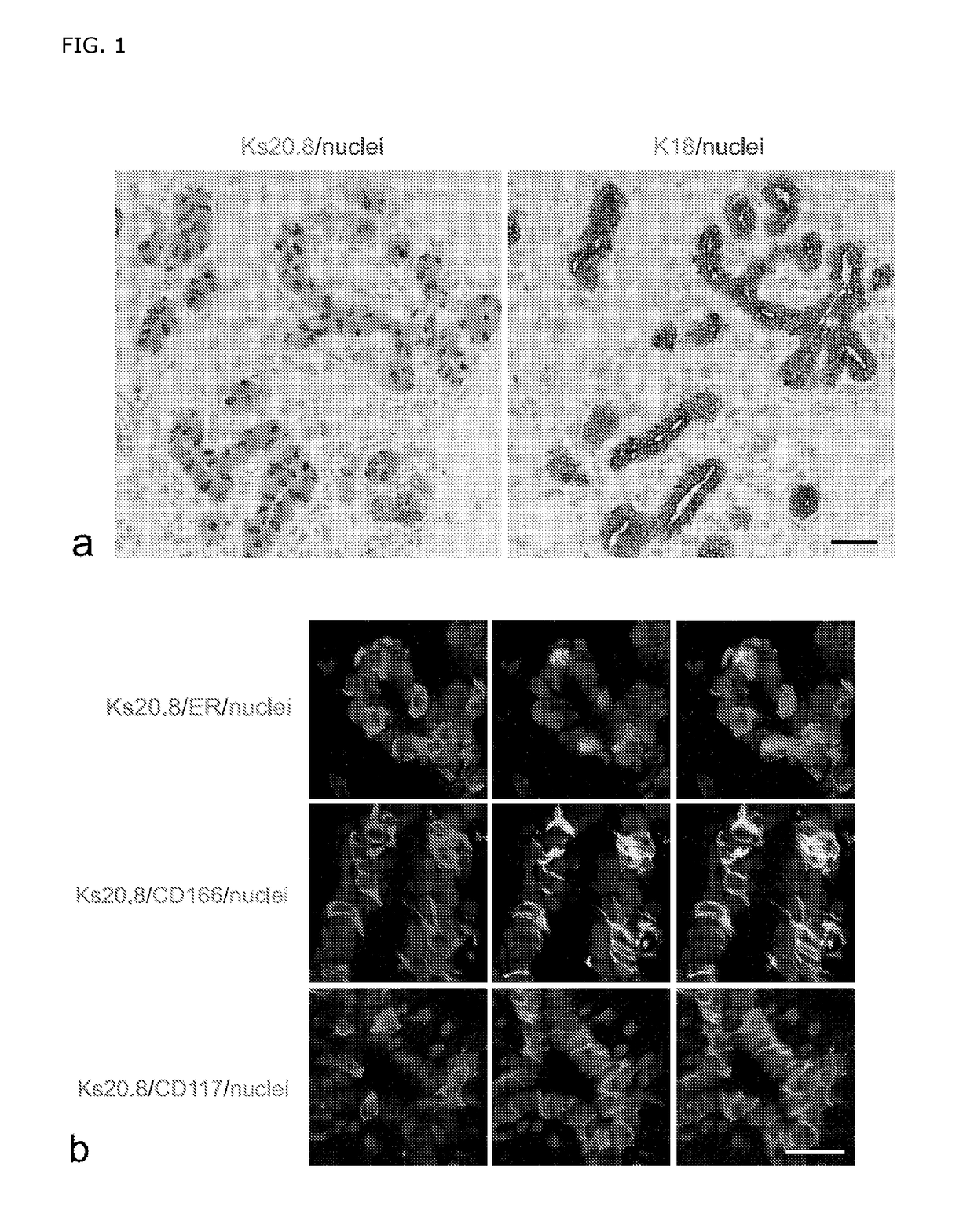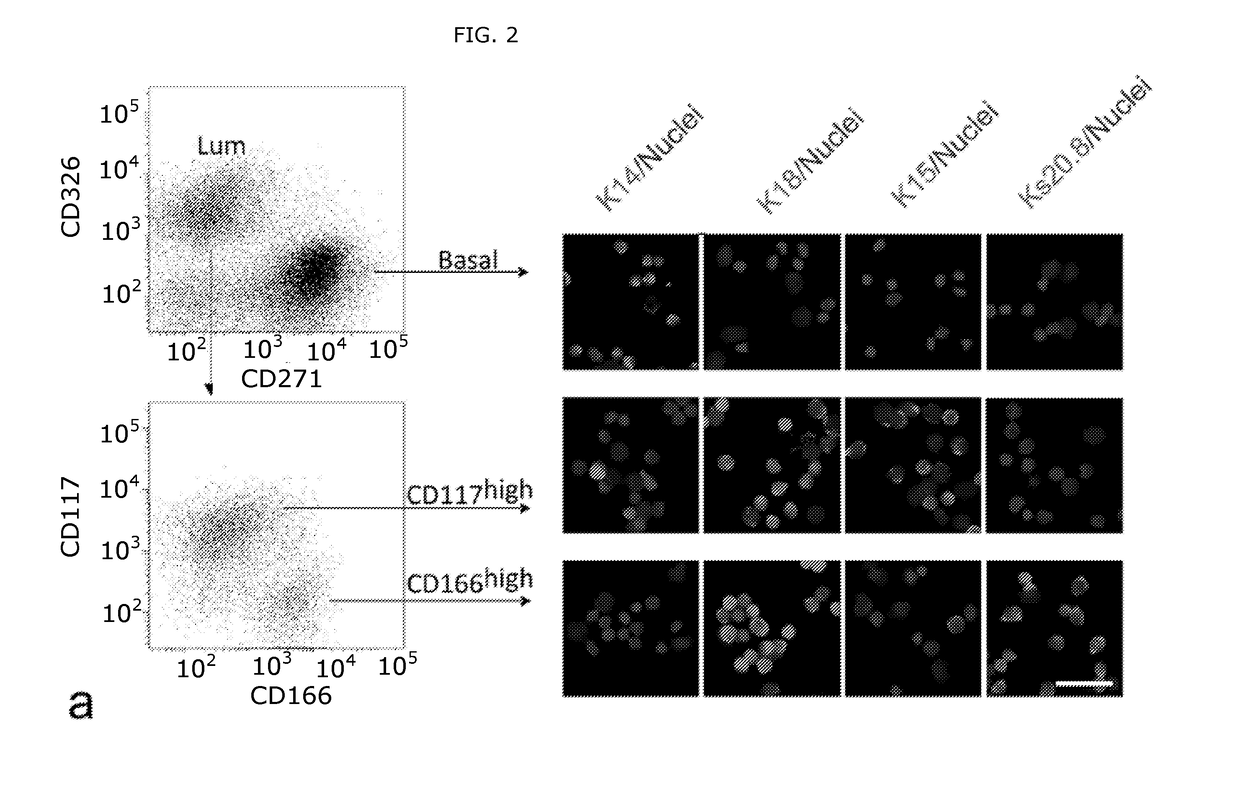Isolation and long-term culturing of estrogen receptor-positive human breast epithelial cells
a technology of human breast epithelial cells and culture media, which is applied in the field of culture media for long-term culturing of estrogen receptor positive (erpos) cells, can solve the problems of inability to support the propagation of erpos /sup>cells or even maintenance beyond, and the chances of recovering these cells in culture without prospective isolation are in many cases elusive, and the expression of steroid receptors is eventually lost after few days
- Summary
- Abstract
- Description
- Claims
- Application Information
AI Technical Summary
Benefits of technology
Problems solved by technology
Method used
Image
Examples
examples
[0278]Methods
[0279]Tissue.
[0280]Normal breast biopsies were collected with consent from women undergoing reduction mammoplasty for cosmetic reasons. The use of human material has been reviewed by the Regional Scientific Ethical Committees (Region Hovedstaden) and approved with reference to H-2-2011-052. Normal breast tissue was prepared as previously described (Ronnov-Jessen et al. 1993). Upon collagenase treatment, fibroblasts and epithelial organoids were either used directly or frozen in liquid nitrogen for later use.
[0281]Fluorescence Activated Cell Sorting (FACS).
[0282]To reveal epithelial cell composition and to isolate single cells, organoids from twelve biopsies were trypsinized, filtered through a 100 μm filter and resuspended in HEPES buffer supplemented with 0.5% BSA (bovine fraction V; Sigma-Aldrich) and 2 mM EDTA (Merck), pH 7.5. The suspended cells were incubated for 45 min at 4° C. in the presence of conjugated monoclonal antibodies EpCAM / CD326-PerCP cy5.5 (9C4, 1:20,...
PUM
| Property | Measurement | Unit |
|---|---|---|
| concentration | aaaaa | aaaaa |
| density | aaaaa | aaaaa |
| temperature | aaaaa | aaaaa |
Abstract
Description
Claims
Application Information
 Login to View More
Login to View More - R&D
- Intellectual Property
- Life Sciences
- Materials
- Tech Scout
- Unparalleled Data Quality
- Higher Quality Content
- 60% Fewer Hallucinations
Browse by: Latest US Patents, China's latest patents, Technical Efficacy Thesaurus, Application Domain, Technology Topic, Popular Technical Reports.
© 2025 PatSnap. All rights reserved.Legal|Privacy policy|Modern Slavery Act Transparency Statement|Sitemap|About US| Contact US: help@patsnap.com



